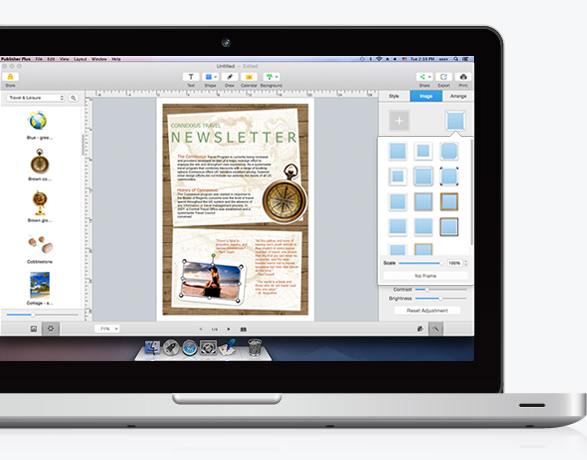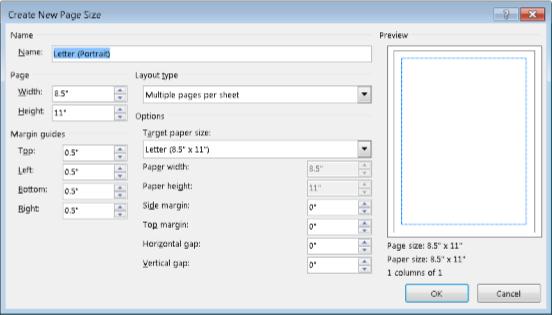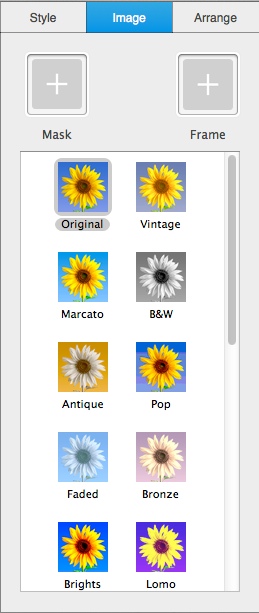

- #CUSTOMIZE PAG SIZE PUBLISHER PLUS PDF#
- #CUSTOMIZE PAG SIZE PUBLISHER PLUS CODE#
- #CUSTOMIZE PAG SIZE PUBLISHER PLUS PLUS#
- #CUSTOMIZE PAG SIZE PUBLISHER PLUS WINDOWS#
Many commercial printers accept files in native Microsoft Publisher (.PUB) file format, but some printers require a PDF file instead. There’s just one last question to answer. Now that you’ve properly prepared all files, you can send everything to the printer.
#CUSTOMIZE PAG SIZE PUBLISHER PLUS CODE#
Save As rewrites the code structure and potentially decreases the file size. To cut down on upload time, do a Save As just before you send the file. The larger the file, the longer it will take to upload to the commercial printer’s site. You may also want to check the file size of your layout. Running this utility ensures that the necessary items for your design are in place, that extra items are removed, and your content is displayed correctly. This utility checks your layout for accuracy, including text cut off within a text box, information flowing off the page, overlapped items, and so on. Right before you send your files to the printer, run Publisher’s Design Checker by clicking Tools > Design Checker. You can check resolution in the Details area of the Graphics Manager.

For clear and crisp printing, all CMYK images should be 300dpi at the final size in the layout. To make sure all images are embedded, go to Tools > Commercial Printing Tools > Graphics Manager. Unless you unembed them, you can send just the layout file. But unlike fonts, Publisher embeds images in files by default. Images and Clip ArtĪs with fonts, your commercial printer must have the images in your design to print your job correctly. Remember to supply the press with the fonts that you bought or downloaded for the layout.
#CUSTOMIZE PAG SIZE PUBLISHER PLUS WINDOWS#
Other versions of Windows may have slightly different fonts. For a list of fonts that come with Windows XP, see this page from Microsoft. Your printer will have all the fonts that came installed on your computer, so there’s no need to send those. Send copies of the fonts to the printer along with the layout file. To find out which fonts are in your completed project, go to Tools > Commercial Printing Tools > Fonts. In the postcard example, all content should be inside a designed space of 3.875″ x 5.875″. Remember to keep all content you don’t want cut off. If you’re working on a 4″ x 6″ postcard, your custom page size should be 4.125″ x 6.125″. Ask the commercial printer for their bleed requirements and acceptable trim limits, then build those into your design. Publisher doesn’t accommodate for bleed, so you’ll have to do it yourself. Simply click the All Colors radio button, enter in the specific Color Model and Build, then click Apply. They may recommend you build it differently to accommodate the color changes after file submission.Īccess the More Colors option from the color palette to create a specific color formula that you can then load into the color palette. If you need a different library, talk with your commercial printer first. Publisher uses the Pantone CVC color library.
#CUSTOMIZE PAG SIZE PUBLISHER PLUS PLUS#
After you load those two spot colors, the color palette displays them in 10-percent increments plus white. Publisher limits your Pantone choices to two colors plus black.

You can change the color space at any time for ultimate control, do it before you begin your design. Before sending off a Publisher file, go to Tools > Commercial Printing Tools > Color Printing and select the correct color space (probably CMYK or Pantone). Color Optionsīy default, Publisher works in the RGB color space, but of course, commercial presses don’t print in RGB. Without these key pieces, you may be faced with unplanned additional costs and wasted time before your job can print. You’ll have to make sure your layout file is in the appropriate color space, set up bleeds if anything on the page goes to the edge of the sheet, and supply the fonts and images used in the design. Regardless of the commercial printer you choose, your Publisher files won’t output correctly unless you meet certain requirements. And that’s where this article can help, with Publisher-specific tips for preparing files to be commercially printed. It’s possible to produce high-quality printed pieces from Publisher files, but you may have to take different steps during the production process. But when circumstances cause us to use less common applications, we have to adapt to get the best results. Programs such as QuarkXPress, InDesign, and Illustrator are the most common tools on a graphic designer’s utility belt.


 0 kommentar(er)
0 kommentar(er)
